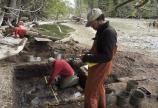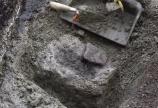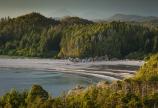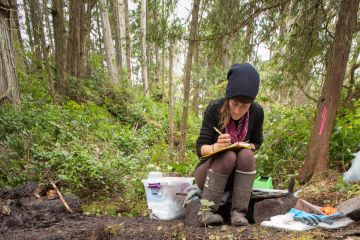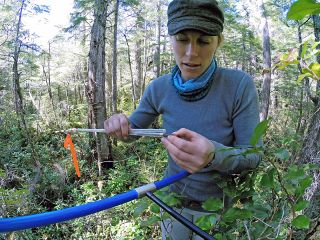The footprints of human settlement on the BC coast could be 13,000 years old
- Anne MacLaurin
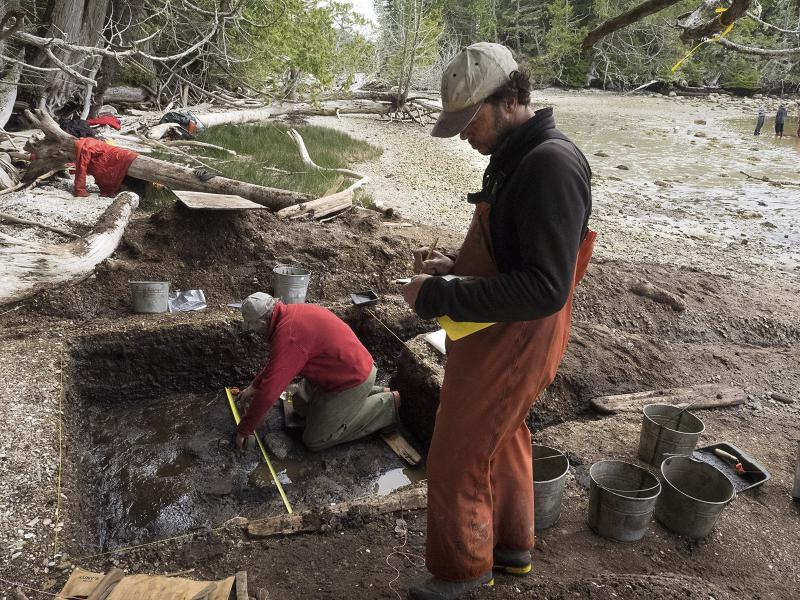
Family gatherings around a fire pit—an ancient custom that’s still with us today—may have been practiced as long as 13,000 years ago along BC's central coast. Footprints from what appear to be a man, woman and child circling a hearth were found earlier this year below the tideline.
Update: The new paper, published in PLOS ONE on March 28, 2018, confirms this finding and adds to the growing body of evidence that humans inhabited the Pacific coast of Canada during late Pleistocene times. The news about the footprints again garnered international attention including in New York Times, National Geographic, The Guardian, Forbes, Toronto Star and numerous other outlets.
Twelve single footprints were found in April 2015 in a layer of clay on a beach on remote Calvert Island in the Great Bear Rainforest on BC’s central coast. Archaeologists Dr. Duncan McLaren and Dr. Daryl Fedje, researchers with the Hakai Institute and the University of Victoria’s Department of Anthropology, were digging for prehistoric stone tools and bones—only to uncover what could be the oldest human footprints in North America.
In a recent interview with Hakai Magazine McLaren explained, “to see those footprints, it’s really evocative,” marvels McLaren. “It’s something we can all relate to because it represents a brief moment of time.”
McLaren and Fedje call their archaeological methodology ‘unconventional’, McLaren explains, “we have to take the time to excavate but we are always looking over our shoulder watching the tide. With the footprints we had to cover the area with a plastic layer and when we returned in the morning it was covered in seaweed, debris, and sand. It then took a long time to carefully remove all the debris and get back to the work we had uncovered the day before.”
“There are layers above and below all 12 footprints that still need to be rigorously tested and analyzed,” McLaren points out. “This is an exciting hint of a group of footprints left behind in prehistoric times and now we will dig deeper into this [finding] to duplicate and confirm the preliminary results with radiocarbon dating.”
It reaffirms the Indigneous oral histories of early human occupation along the northwest coast of North America, long known by the Heiltsuk and Wuikinuxv people of BC.
McLaren and Fedje were interviewed for a feature story the institute’s Hakai Magazine. Read the full story here: http://www.hakaimagazine.com/article-long/time-travelers.
——
The original story was picked up widely, including by Scientific American, the Daily Mail (UK) and The Globe and Mail.
Photos
In this story
Keywords: Hakai, archaeology, anthropology, Indigenous, history
People: Duncan McLaren, Daryl Fedje

